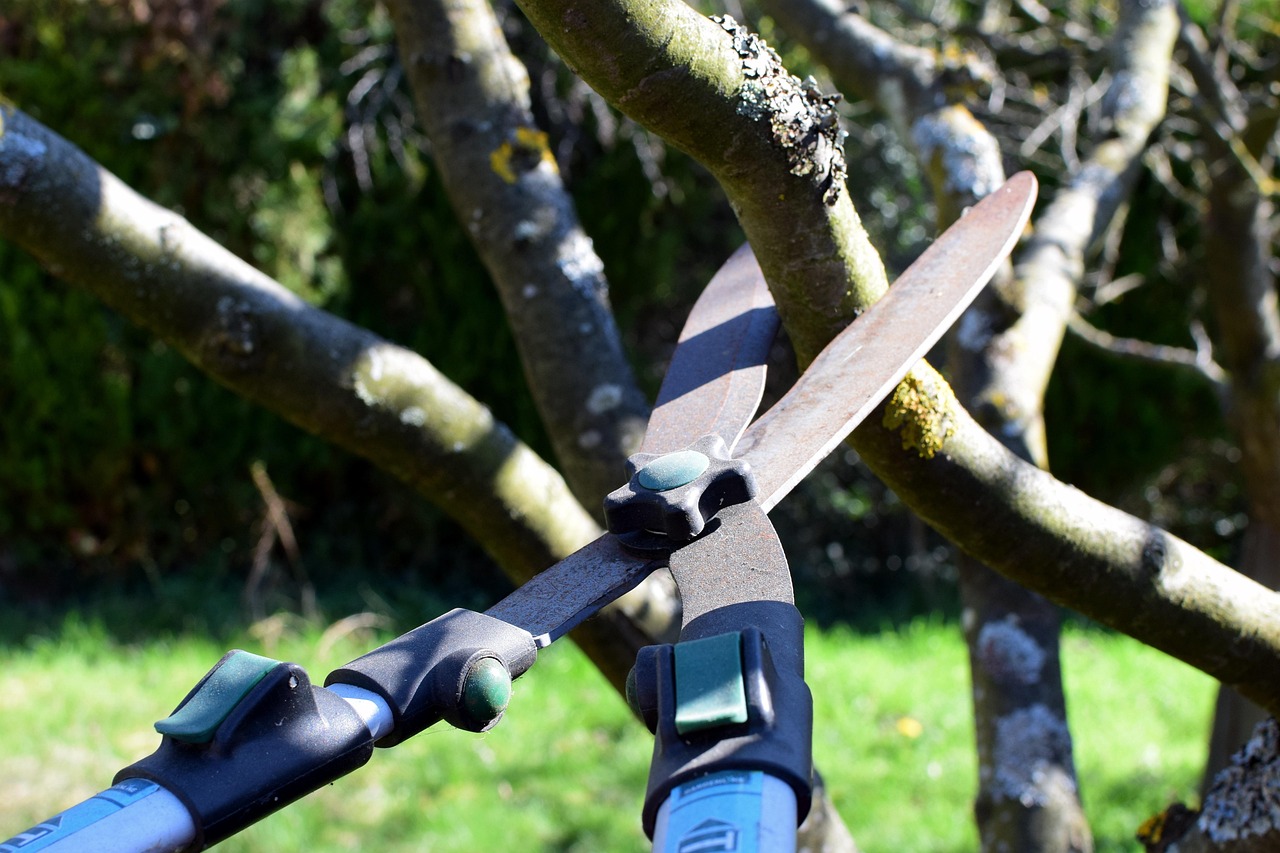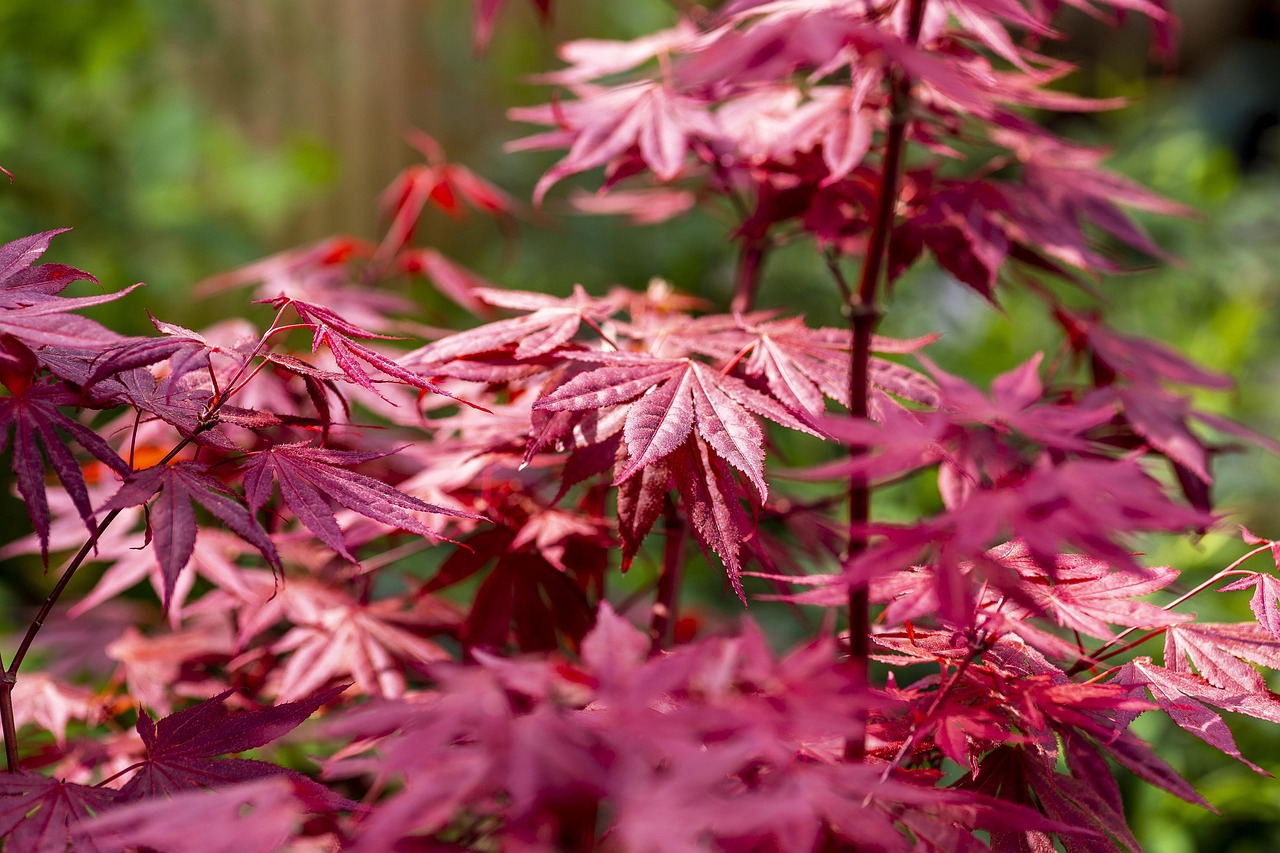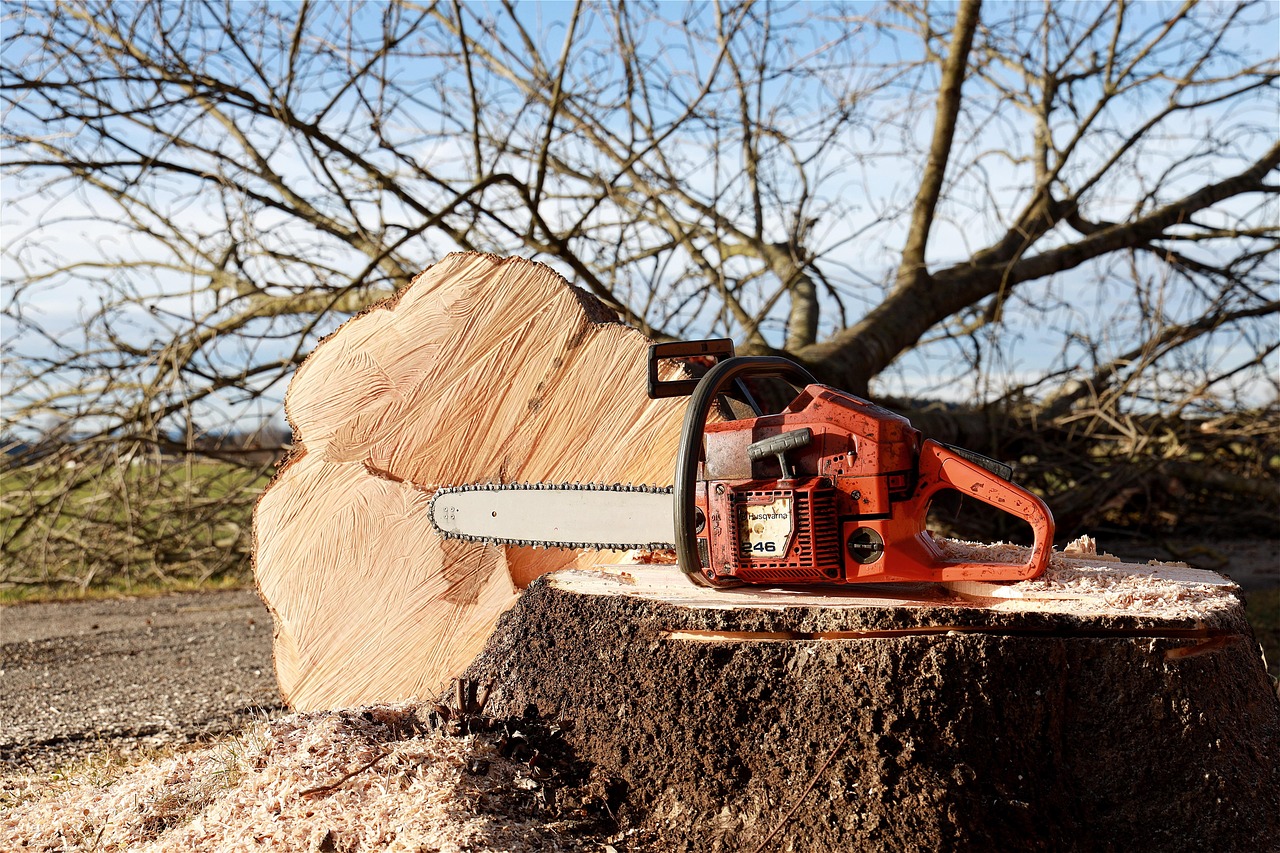Acer tree pruning is essential for maintaining healthy growth, enhancing aesthetics, and ensuring proper sunlight penetration. Regular pruning encourages vibrant foliage and supports the overall structure of the tree.
Acer trees, commonly known as maples, are beloved for their stunning fall colors and unique leaf shapes. These trees can flourish in various environments, making them a popular choice for both residential and commercial landscapes. However, to keep them healthy and vibrant, proper pruning is necessary. Pruning not only shapes the tree but also helps in removing dead or diseased branches, which can impact the tree’s health.

The best time to prune acer trees is during late winter or early spring, just before new growth begins. This timing minimizes stress on the tree and promotes vigorous growth. It is also crucial to use sharp, clean tools to make precise cuts. This practice reduces the risk of injury to the tree and allows for quicker healing.
Understanding Acer Trees
Acer trees belong to a diverse genus with over 150 species. They are found in a range of sizes and colors, each with its unique characteristics. Some popular species include:
- Red Maple (Acer rubrum)
- Sugar Maple (Acer saccharum)
- Japanese Maple (Acer palmatum)
- Norway Maple (Acer platanoides)
Each species has its pruning requirements based on growth habits, size, and seasonal changes. Understanding these differences is essential for effective pruning.

Benefits of Pruning Acer Trees
Pruning acer trees offers several benefits that contribute to the overall health and appearance of the tree. Some key advantages include:
- Health Improvement: Removing dead or diseased branches prevents the spread of pathogens.
- Enhanced Growth: Pruning encourages new growth by allowing more sunlight to penetrate through the canopy.
- Shape Maintenance: Regular pruning helps maintain the desired shape and size of the tree.
- Improved Air Circulation: Thinning out dense areas allows for better air circulation, reducing the risk of fungal diseases.
Tools Needed for Pruning
Before starting the pruning process, it’s important to have the right tools. Here are some essential tools you will need:
| Tool | Description |
|---|---|
| Pruning Shears | Ideal for cutting small branches and stems. |
| Loppers | Used for larger branches that are too thick for shears. |
| Saw | A hand saw or pole saw is necessary for larger limbs. |
| Gloves | Protect your hands while handling tools and branches. |
| Pruning Paint (optional) | Helps seal cuts on larger branches to prevent disease. |
Having these tools ready will make the pruning process safer and more efficient. Always ensure that your tools are clean and sharp before starting work on your acer trees.

How to Prune Acer Trees
The process of pruning acer trees can be broken down into several steps:
- Assess the Tree: Examine the tree’s overall shape and identify any dead or crowded branches.
- Make the Cuts: Start with dead or diseased branches. Cut back to healthy tissue or remove completely.
- Thin Out Crowded Areas: Remove branches that cross each other or those that are too close together to promote airflow.
- Shape the Tree: Trim back branches to maintain a balanced shape without removing too much foliage.
Remember to step back often during the process to assess your progress. This will help ensure that you maintain a natural look while effectively promoting growth.
Understanding how to properly prune acer trees will lead to healthier, more vibrant specimens in your garden. By following these guidelines, you can enjoy the beauty and shade that these magnificent trees provide for years to come.

Timing Your Pruning
Timing is crucial when it comes to pruning acer trees. The right time to prune can significantly affect the health and appearance of your tree. Understanding the best times to prune will help you achieve optimal results.
The ideal time for pruning acer trees generally falls within late winter to early spring. This period is before the tree begins its new growth phase. Pruning during dormancy minimizes stress on the tree and allows it to heal quickly once the growing season starts. However, specific conditions may warrant adjustments to this general guideline.
Seasonal Considerations
Different seasons can influence the timing of your pruning efforts. Here are some factors to consider:
- Late Winter/Early Spring: This is the most recommended time for pruning. The tree is dormant, and you can easily see the structure without leaves obstructing your view.
- Summer: Light pruning can be done during the summer months. This helps maintain shape and remove any unwanted growth. Avoid heavy pruning, as this can stress the tree.
- Fall: It is generally advised to avoid pruning in the fall. Pruning at this time can stimulate new growth that may not survive winter conditions.
Identifying Common Problems
Pruning is not just about shaping your acer trees; it also includes identifying and addressing common issues that can affect their health. Recognizing these problems early on allows you to take appropriate action.
Common Diseases and Pests
Acer trees can be susceptible to various diseases and pests. Here are some common concerns:
| Disease/Pest | Description | Signs |
|---|---|---|
| Leaf Spot | A fungal infection that causes dark spots on leaves. | Discolored spots on leaves, premature leaf drop. |
| Aphids | Small insects that feed on sap, weakening the tree. | Sticky residue on leaves, curled or distorted leaves. |
| Powdery Mildew | A fungal disease that creates a white powdery coating on leaves. | White patches on leaves, stunted growth. |
| Scale Insects | Pests that attach themselves to branches and suck sap. | Sticky residue, honeydew production, wilting leaves. |
If you notice any signs of disease or pests during your pruning sessions, it is essential to take action promptly. This may involve applying appropriate treatments or consulting with a professional arborist.
Pruning Techniques for Different Acer Species
Each species of acer tree may require different pruning techniques based on their growth habits and characteristics. Understanding these differences will help you tailor your approach effectively.
Red Maple (Acer rubrum)
The red maple is known for its rapid growth and beautiful fall colors. When pruning red maples, consider the following:
- Focus on removing crowded branches to enhance light penetration.
- Avoid cutting too much foliage, as this can lead to stress on the tree.
- Cut back leggy growth for a more balanced shape.
Sugar Maple (Acer saccharum)
Sugar maples are slower-growing but can live for many years. For these trees:
- Prune sparingly to maintain their natural form.
- Remove dead or diseased branches promptly as they can affect sap production.
- Thin out branches in the interior of the tree to improve air circulation.
Japanese Maple (Acer palmatum)
Japanese maples are often prized for their ornamental value. When pruning these trees, keep in mind:
- Use a light hand to preserve their delicate structure and aesthetics.
- Avoid heavy pruning; focus on minor adjustments to maintain shape.
- Remove any crossing branches that may cause damage over time.
By understanding the unique needs of each acer species, you can ensure that your pruning efforts yield healthy, vibrant trees that enhance your landscape.
Pruning Techniques and Methods
Understanding the various pruning techniques is essential for maintaining the health and beauty of acer trees. Different methods can be applied based on the specific needs of each tree and the desired outcome. Here are some effective techniques to consider.
Thinning
Thinning involves selectively removing branches to improve airflow and light penetration within the tree. This technique is beneficial for promoting healthy growth and reducing the risk of disease.
- Choose branches: Focus on crowded areas where branches cross or grow too closely together.
- Cut back to a lateral branch: Always make cuts at a joint with a healthy lateral branch, ensuring that the remaining branch can continue to grow.
- Aim for balance: Maintain a balanced structure by evenly spacing out branches.
Heading Cuts
Heading cuts are used to shorten branches and encourage bushier growth. This method is particularly useful for young acer trees that need shaping.
- Select branches: Identify long or leggy branches that need reduction.
- Make clean cuts: Cut back to a bud or branch node, which will promote new growth in the desired direction.
- Avoid excessive cutting: Limit heading cuts to prevent stress and overgrowth in unwanted areas.
Deadwooding
Deadwooding is the process of removing dead, dying, or diseased branches from the tree. This practice enhances the overall health and aesthetics of acer trees.
- Inspect regularly: Check for any signs of dead or diseased wood during your pruning sessions.
- Remove completely: Cut dead branches back to the main trunk or to a healthy lateral branch.
- Monitor for pests: Deadwood can attract pests; remove it promptly to minimize risks.
Post-Pruning Care
After pruning acer trees, it is vital to provide adequate care to ensure they recover well and thrive. Here are some essential post-pruning practices:
Watering
Proper watering is crucial following pruning. Here are some tips:
- Deep watering: Ensure that the tree receives deep watering to promote root development.
- Avoid overwatering: Be cautious not to water too frequently, as this can lead to root rot.
- Monitor soil moisture: Check the soil regularly and adjust watering based on weather conditions.
Fertilization
Applying fertilizer after pruning can help support new growth. Consider the following guidelines:
- Use a balanced fertilizer: Choose a slow-release fertilizer that provides essential nutrients without causing stress.
- Timing: Apply fertilizer in early spring, just as new growth begins.
- Avoid over-fertilization: Too much fertilizer can harm the tree; follow package instructions carefully.
Common Mistakes to Avoid
Avoiding common pruning mistakes can significantly enhance the results of your efforts. Here are some pitfalls to watch out for:
- Pruning at the wrong time: Avoid pruning in late fall or early winter when trees are preparing for dormancy.
- Over-pruning: Removing too much foliage can stress the tree. Stick to the rule of only removing up to 20% of the canopy in one session.
- Poor cuts: Make clean cuts at the right angles to promote faster healing and reduce damage.
- Ignoring tree health: Always assess the overall health of the tree before pruning. Address any underlying issues first.
Understanding Growth Patterns
Acer trees exhibit distinct growth patterns that can influence how and when you prune. Recognizing these patterns will help you make informed decisions about your pruning approach.
Crown Development
The crown of an acer tree develops differently depending on its species and environmental factors. Some trees have a broad crown, while others may be more upright. Consider the following:
- Monitor growth direction: Prune to encourage a desirable growth direction, especially for young trees.
- Crown lifting: For larger trees, removing lower branches (crown lifting) can improve access and aesthetics.
Suckering
Suckering refers to the growth of new shoots from the base or roots of the tree. While this can be a natural part of growth, excessive suckering can detract from the tree’s appearance.
- Regular removal: Regularly cut back suckers to encourage stronger main growth.
- Avoid damaging roots: When removing suckers, be cautious not to damage the main root system.
By mastering these techniques and understanding growth patterns, you can enhance the health and beauty of your acer trees through effective pruning practices.
Advanced Pruning Techniques
For those who have gained experience in pruning acer trees, advanced techniques can offer even greater control over growth patterns and aesthetics. These techniques require a deeper understanding of tree biology and growth behavior.
Espalier
Espalier is a method of training a tree to grow flat against a wall or fence. This technique is not only functional but can also create stunning visual displays.
- Choose the right location: Select a sunny wall or fence that provides adequate support for the tree.
- Regular training: As the tree grows, regularly tie branches to supports to encourage horizontal growth.
- Prune selectively: Focus on maintaining the desired shape through strategic cuts while removing unwanted vertical growth.
Pollarding
Pollarding is a technique involving cutting back the tree’s branches to a certain height, promoting a dense canopy of foliage. This method is often used for maintaining manageable sizes in urban settings.
- Timing: Perform pollarding in late winter before new growth begins.
- Make clean cuts: Cut back to a lateral branch or bud to encourage healthy regrowth.
- Regular maintenance: Pollarding should be done annually to keep the tree healthy and maintain its size.
Environmental Considerations
When pruning acer trees, it is vital to consider environmental factors that may influence their health and growth. Understanding these factors can lead to better pruning outcomes.
Soil Quality
The soil in which your acer trees grow plays a significant role in their overall health. Consider the following:
- Soil type: Maples prefer well-drained, loamy soil rich in organic matter.
- pH levels: Aim for a pH level between 6.0 and 7.5 for optimal nutrient uptake.
- Soil amendments: Add compost or organic fertilizers to improve soil quality and promote healthy growth.
Weather Conditions
The local climate can greatly impact pruning practices and tree health. Pay attention to these factors:
- Temperature fluctuations: Extreme cold or heat can stress trees; adjust your pruning schedule accordingly.
- Moisture levels: Ensure adequate watering during dry spells, especially after heavy pruning.
- Wind exposure: Protect young trees from strong winds, which may require selective pruning for stability.
Pest and Disease Management
A proactive approach to pest and disease management is essential for the long-term health of acer trees. Implementing an integrated pest management (IPM) plan can help you detect, prevent, and control issues effectively.
- Regular inspections: Routinely check for signs of pests or diseases during pruning sessions.
- Cultural practices: Maintain healthy growing conditions through proper watering, fertilization, and mulching.
- Pesticide use: If necessary, use targeted pesticides as a last resort, following all application guidelines carefully.
Final Thoughts
Pruning acer trees is a vital practice that contributes significantly to their health, beauty, and longevity. By understanding the specific needs of each species, employing various pruning techniques, and considering environmental factors, you can create vibrant and thriving specimens in your landscape.
The key takeaways from this guide include the importance of timing your pruning correctly, using the appropriate techniques for different types of acer trees, and providing ongoing care post-pruning. Additionally, being mindful of environmental conditions and potential pests can lead to healthier trees and more successful pruning outcomes.
Whether you are a novice gardener or an experienced arborist, applying these principles will enhance your ability to care for acer trees. With dedication and knowledge, you can enjoy the stunning beauty and shade that these magnificent trees provide for generations to come.
